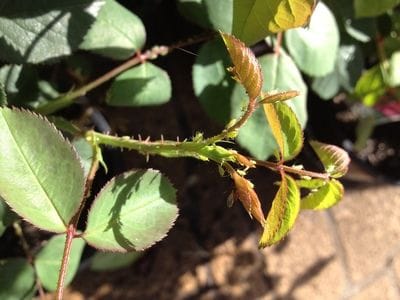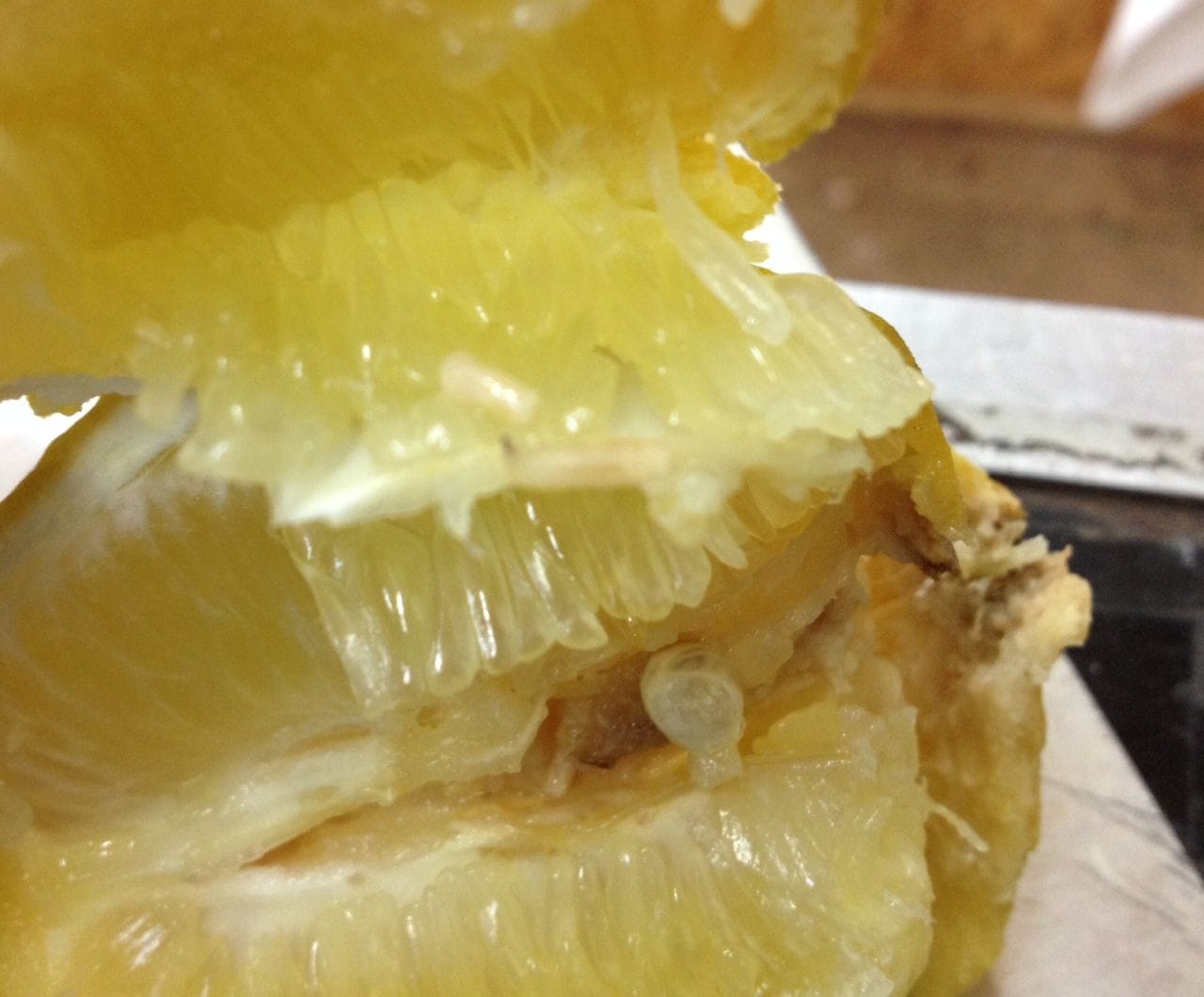PESTS
Aphids
Description:

Control:
Organic controls include encouraging the aphid's natural predators, such as ladybirds, lacewings and parasitic wasps, as well as ensuring the health of the plants which makes them less likely to be attacked. This can be achieved through appropriate fertilising, watering and mulching. Other organic controls include the use of sprays such as pyrethrum, white oil, and petroleum-based products (e.g. PestOil); however, these sprays are non-selective and so will also kill ladybirds and lacewings. Non-organic control includes the use of sprays such as Confidor/Conguard.
Bronze Orange Bug
Description
Also known as the stink bug, the Bronze Orange Bug is a sap-sucking insect that commonly appears on citrus in spring, feeding on young shoots, fruit and flowers. It is green in its nymphal stage and gradually ages to a bronze colour. When disturbed, it will emit a foul-smelling chemical which can stain skin and irritate the eyes.
Control
Can be removed by hand (wear gloves and eye protection) into a bucket of soapy water, or vacuumed off the plant, or sprayed with soap, PestOil and pyrethrum sprays for organic control. Alternatively for non-organic control sprays such as Conguard or Folimat can be used.
Borer
Description
Borers can be beetles or moths; the damage is caused by the larval stage of these insects. Common borers are the Longicorn and Jewel beetles, wood moths and tip borers. Borer damage can occur in dead wood (timber decking etc.), the bark and wood of trees, and in the new growth of many ornamental plants.
Control
Borers usually attack trees that are already stressed and weakened, so ensuring that plants are healthy by way of appropriate watering, fertilising and control of other pests and diseases; plants which are well-suited to the conditions they are planted in are more likely to be healthier and more resistant to pests such as borer. Physical damage to trees can create an entry point for borers so it is important that correct pruning techniques are adhered to. Tip borer can be sprayed with pyrethrum, Dipel or Mavrik. Trees that are affected by wood-eating borer need to be removed.
Caterpillars
Description
Caterpillars are the larvae of moths and butterflies, and usually chew holes in the leaves of plants, but some also feed inside fruit. Common caterpillar pests are the cabbage white butterfly and codling moth.
Control
Hand-picking of caterpillars can be a useful control method when populations are small. Encouraging predators such as small birds by providing nesting sites will help to keep caterpillar numbers down. Organic sprays such as garlic spray and pyrethrum can be used. Dipel is a product which contains a bacteria that, when ingested by caterpillars, will kill them within 5-7 days but is harmless to beneficial insects such as bees. As it is broken down in sunlight, re-application may be necessary. Non-organic solutions include sprays such as Success and Mavrik.
Fruit Fly
Description
 The main fruit fly pest in eastern Australia is the Queensland Fruit Fly. The larva is 7-9mm long and is a creamy white colour. The eggs are laid just beneath the skin and when hatched, the larvae burrow toward the centre of the fruit. This causes the fruit to rot and drop. Fruit flies are active during the warmer months, peaking in population in late summer. When mature, the larvae move from the fruit into the soil to pupate. Larvae attack a wide range of trees including, but not limited to, avocados, citrus, stonefruit, apples, grapes, passionfruit, olives and tomatoes.
The main fruit fly pest in eastern Australia is the Queensland Fruit Fly. The larva is 7-9mm long and is a creamy white colour. The eggs are laid just beneath the skin and when hatched, the larvae burrow toward the centre of the fruit. This causes the fruit to rot and drop. Fruit flies are active during the warmer months, peaking in population in late summer. When mature, the larvae move from the fruit into the soil to pupate. Larvae attack a wide range of trees including, but not limited to, avocados, citrus, stonefruit, apples, grapes, passionfruit, olives and tomatoes.
Control
Remove and destroy infested fruit (this can be achieved by placing the fruit in the sun in a sealed plastic bag for several days, or immersing fruit in water). Fruit fly traps attract and trap the male flies, thereby breaking the breeding cycle, and also act as a monitor. Netting fruits or entire trees is often a viable solution. Chooks help to control numbers by foraging for larvae in the soil. For severe infestations spraying may be necessary.
Leafminer
Description
The insect is rarely seen as it is active at night, but damage is obvious as a silvery track tunnelled through the leaf. This often also causes distortion of the leaf. The most common leafminer is the Citrus leafminer, which is the larval stage of a moth, but leafminers can also be beetles, wasps, sawflies or flies, and attack a variety of plants.
Control
Damage is quite common on all citrus and control is not necessary unless the infestation is severe. Prune off affected leaves and spray the tree with white oil to prevent eggs being laid on the healthy leaves. Conguard can also be used as a systemic insecticide.
Scale Insects
Description

Control
White oil or pest oil should target the young crawlers as the older scale will be protected by their coatings. Repeat sprays may be necessary every 6 to 7 days to control newly hatched scale insects. Conguard/Confidor sprays can also be used to control scale insects.
Mealybugs
Description
A white, pink or grey oval bug with a fringe of short waxy threads around its body, mealybugs are a type of scale insect. They lay their eggs in large masses of white wax which is often more readily seen than the insect itself. Mealybugs secrete honeydew, which in turn encourages the growth of sooty mould (see Disease section). Mealybugs tend to congregate in warm, moist protected areas and for this reason are often seen on a wide variety of indoor plants.
Control
If possible prune off affected parts of the plant. Encourage natural predators such as ladybirds and lacewings, or spray infestations with white oil. Sprays such as Confidor/Conguard will also control mealybugs.
Thrips
Description
There are many different species of thrips, but they are usually white, yellow or black and quite small (<1mm in length). They are winged insects which have rasping and sucking mouth parts and cause damage to leaves which appears as a silvery-grey area and sometimes distortion of the leaf. They also leave behind droppings (brown specks on the leaves). Thrips can also feed on flowers, causing petals to brown and drop, and can spread disease from plant to plant. They are often major agricultural pests. They have a very wide variety of hosts, and are commonly found on plants such as azaleas, roses, fruit trees and vegetables.
Control
Use a soap spray or pyrethrum, reduce overhead watering and control weeds in the vicinity. For non-organic control use Conguard/Confidor to control pest numbers.
Two-spotted mite
Description
Also known as red spider mite, these mites are just visible to the naked eye and feed on the undersides of leaves of a wide range of plants, including fruit and vegetable plants, annuals and ornamentals. They change colour from pale green to orange-red during winter. Their feeding causes yellow or grey mottling of the leaves which will eventually result in an inability to photosynthesise and leaves to drop. Their fine webbing can usually be seen on the undersides of leaves and on branches.
Control
Remove and destroy affected leaves, water affected plants from above, and control weeds in the area that may be harbouring the mites. Encourage natural predators such as ladybirds and lacewings. Spray with pest oil/white oil during winter. For non-organic control sprays such as Mavrik can be used.



)
)





